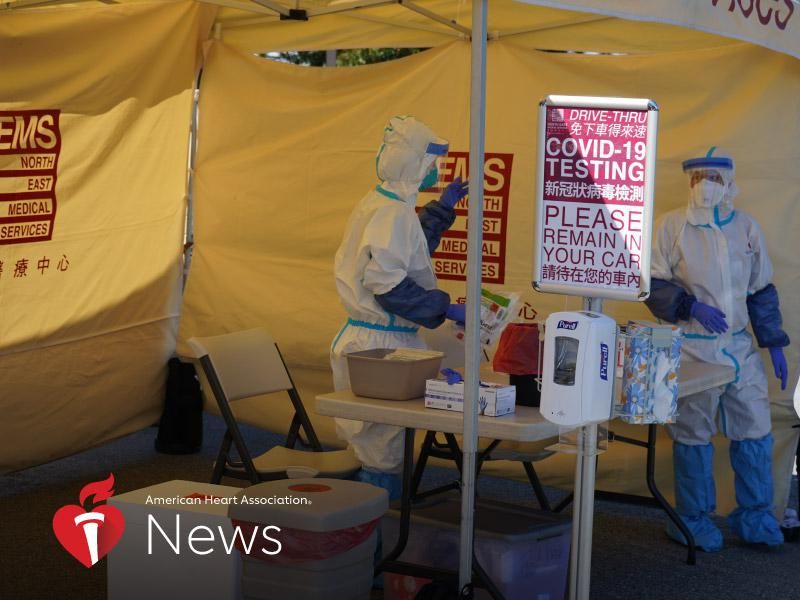FRIDAY, Feb. 12, 2021 (American Heart Association News) — Nelson Zhao grew up in San Francisco’s Chinatown, and as a child started going to a nonprofit community health center. Today, at 29 and with a good job working in the finance sector, he’s never given a second thought to going anywhere else.
With 12 clinics throughout the San Francisco Bay Area, North East Medical Services serves patients of many nationalities, many of whom are uninsured or low-income.
“It gives me a connection to my community,” said Zhao, the son of Chinese immigrants. “The whole building has my dental, my vision and my doctor there, too. Sometimes I’ll go for an annual checkup and I’ll get my teeth cleaned, and it’s like a one-stop shop.”
Zhao’s parents – who also are patients at NEMS – don’t speak English, and the health center’s staff members are fluent in a wide variety of languages and dialects: Cantonese, Mandarin, Toishan, Vietnamese, Burmese, Tagalog, Spanish and Hindi.
“Now that I’m older, I’ve really begun to notice whenever I go in that the people around me, the patients who are sitting next to me waiting in line, they look like my community,” he said. “It’s reassuring to me that there are people who come here for checkups when it feels like they may not get that same service otherwise because they may not feel comfortable elsewhere.
“The doctors are multilingual and look like the people they serve, which I think is very important.”
NEMS served as many as 70,000 patients a year before the COVID-19 pandemic. For many, the switch to telehealth services wasn’t seamless, and keeping up with patients became a challenge when businesses locked down; aside from language and cultural barriers, access to technology also became an issue.
“There were a lot of patients who struggled with the technology that they had,” said Andrey Chow, director of programs and administration at NEMS. “For some of the people who were using cellphones, that was the limit to the technology that they were able to access. They didn’t have internet access or broadband access at home.”
Compounding the problem as the pandemic started to rage were significant communication challenges. “Most of the information is in English,” Chow said. “It’s very common for our patients to basically just come in, walk into our doors, and say, ‘I got this in the mail. I don’t know what it says. Please help me.’ But many patients lost that lifeline when they had to shelter in place and feared getting exposed to COVID-19 just by leaving their home.”
And if those barriers haven’t been enough, NEMS staffers also had to find new ways to educate their diverse clientele about everything from varying county-specific health directives to basic information about healthy diet and lifestyle choices to control chronic conditions.
“We have to try to debunk some of the false information about the general guidelines of hypertension,” said Wai-Hang Jackie Lam, medical director and quality improvement director at NEMS. “Before the pandemic, we had patient health coaches who were there to go through a lot of education in terms of how to diagnose hypertension, how to take care of their diet, exercising – just to talk through the lifestyle modifications they can do to control their blood pressure.
“We had to put that to a halt, but it was a pretty successful program when we had it.”
Lam said patients who continued high blood pressure treatment through remote visits often showed elevated readings when they were able to return to the center in person, highlighting the challenges involved with self-monitoring and with practicing medicine in a telehealth setting.
“If everything had gone normally in 2020, one of our organizational goals was supposed to be to focus on hypertension,” Chow said. “At this point, we have close to 13,000 out of our 70,000 patients who have hypertension. It’s pretty prominent in the community.”
NEMS recently received funding from the American Heart Association’s Bernard J. Tyson Impact Fund, which helps organizations seeking to reduce social and economic barriers to health equity.
The funding was a welcome windfall for an organization that relies on community support and an efficient business model.
“We don’t have an annual gala where we go out and do the rubber chicken dinner to raise money,” Chow said. “A lot of the way we operate is based on services we provide and whether or not we can bill, whether or not different insurances or health coverage programs pay for it.”
NEMS was quick to offer drive-through COVID-19 testing when the pandemic began. And when there was a shortage of personal protective equipment, “we had a lot of support from the community, just from individuals and businesses and a lot of the groups that formed to respond to the PPE shortage,” she said. “That was an amazing thing.”
With COVID-19 vaccines now available, NEMS faces the new challenge of vaccinating its patients.
“On one hand, we have patients who are clamoring to get in for the vaccinations,” Chow said, “and on the other hand, there will be patients who are afraid or mistrustful of something so new. It’ll be our job to connect with everyone, in their language and a manner that is accessible, to make sure they get what they need for their continued health.”
American Heart Association News covers heart and brain health. Not all views expressed in this story reflect the official position of the American Heart Association. Copyright is owned or held by the American Heart Association, Inc., and all rights are reserved. If you have questions or comments about this story, please email editor@heart.org.
By Will Pry
Copyright © 2025 HealthDay. All rights reserved.

